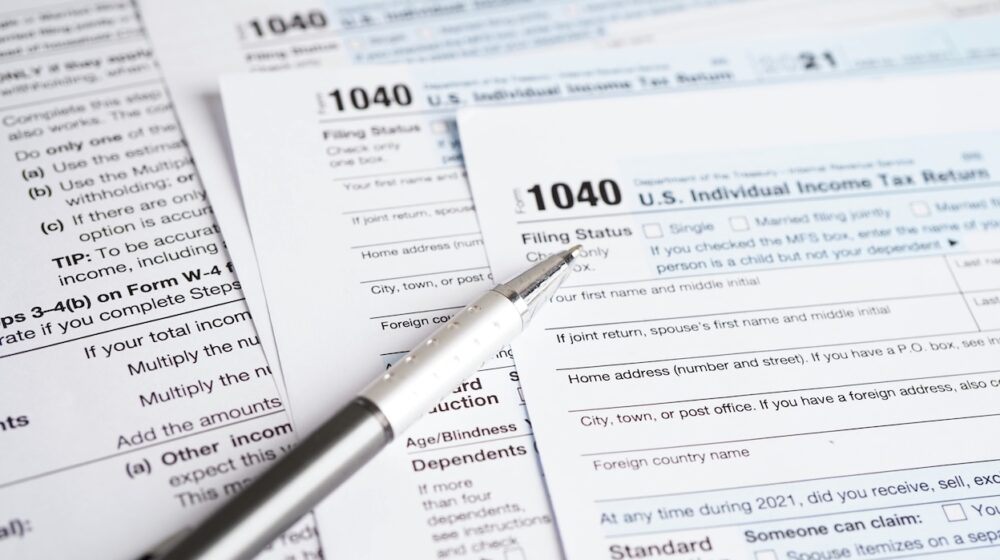The One Big Beautiful Bill Act (The Act)1 was signed into law on July 4, 2025. The Act has a number of tax provisions—some are permanent and others are temporary in nature. This article focuses primarily on provisions that impact high-net-worth individuals and families in their strategic planning for wealth transfer and their personal income taxes.
Key Takeaways
- Estate and Gift Taxes: In 2026, the estate, gift, and GST tax exclusions will be set at $15 million per person with inflation indexing, preserving planning flexibility.
- Income and Deduction Provisions: The Act makes permanent the TCJA’s top income tax rate of 37% and increases standard deductions. It provides new temporary deductions for both seniors as well as for state and local taxes. Itemized deductions for high income taxpayers are limited.
- Charitable Giving Rules: A new deduction is available for non-itemizers starting in 2026, while itemizers are subject to a 0.5% AGI floor on charitable deductions.
- Education and Family-Oriented Taxes: The Act expands uses for 529 plans, establishes new child savings accounts, increases Dependent Care FSA limits, and overhauls federal student loans.
- Investment and Business Incentives: Qualified Small Business Stock gain exclusions are enhanced, bonus depreciation is made permanent, and other planning opportunities for investors and business owners are updated.
The Details
Estate and Gift Tax Exclusion:
The Act permanently sets the estate and gift tax applicable exclusion amount at $15 million per person (or $30 million for a married couple) effective January 1, 2026, avoiding the sunset that was included in the Tax Cuts and Jobs Act (TCJA) of 2017. This threshold also applies to the Generation Skipping Transfer Tax (GSTT). The $15 million amount will be indexed for inflation beginning in 2027. With proper planning, this extends what has been a significant opportunity for intergenerational wealth transfer.
Income Tax Rates and Taxable Income:
Income Tax Rates: The Act makes permanent the income tax rate structure established in the TCJA, maintaining the top ordinary income tax rate at 37%. After current “extra” adjustments for the 10%, 12%, and 22% brackets, going forward all tax brackets will continue to be indexed for inflation.
Tip Income: From 2025 through 2028, up to $25,000 of qualified tip income from an occupation that traditionally receives tips can be excluded from income. This amount begins to phase out for single taxpayers with modified adjusted gross income (MAGI) over $150,000 or over $300,000 for married filing jointly (MFJ), with a reduction of $100 for each $1,000 of the taxpayer’s MAGI that exceeds the threshold.
Overtime Income: From 2025 through 2028, up to $12,500 of overtime income can be excluded from income for single and $25,000 for MFJ taxpayers. These amounts begin to phase out for single taxpayers with MAGI over $150,000 or over $300,000 for MFJ, with a reduction of $100 for each $1,000 of the taxpayer’s income that exceeds the threshold.
Alternative Minimum Tax (AMT): The higher AMT exemptions from the TCJA are extended with threshold exemption phaseouts at $500,000 for single and $1 million for MFJ. Exemptions thresholds are indexed for inflation beginning in 2027 and the phaseouts increase to 50% from 25%.
Income Tax Deductions and Exceptions:
Standard Deduction: The Act makes the larger standard deduction permanent and increases the 2025 amounts to $15,750 for single filers, $23,625 for head of household, and $31,500 for MFJ. These figures will be indexed for inflation going forward.
Bonus Deduction for Senior Taxpayers: For those who are over age 65 by the end of the tax year, there is a $6,000 bonus above-the-line deduction available whether they itemize or not. This is in addition to the age 65+ incremental standard deduction that has been $1,600 per person MFJ and $2,000 for an unmarried person. The $6,000 bonus deduction is available for 2025 through 2028 and begins to phase out for single taxpayers with MAGI above $75,000 and for MFJ above $150,000. This bonus deduction is in lieu of exempting Social Security benefits from taxation.
Charitable Contributions: Beginning in 2026, those who do not itemize can reduce their taxable income by $1,000 per individual ($2,000 for MFJ) for charitable contributions to public charities (not including donor-advised funds (DAFs)). For those that itemize, broader charitable contributions will be subject to a 0.5% adjusted gross income (AGI) floor before amounts can be deducted. Some charitable carryover to future years of amounts disallowed may be available depending on individual circumstances. The Act makes permanent the 60% AGI limit for cash contributions to public charities.
State and Local Tax (SALT) Deductions: Effective from 2025 through 2029, the SALT deduction is temporarily increased from $10,000 to $40,000, but will permanently revert back to $10,000 for tax years beginning with 2030. The $40,000 amount increases by 1% per year until 2029. For those with MAGI over $500,000, the $40,000 maximum deduction amount will decrease by 30% of MAGI over $500,000, which translates to being $10,000 for taxpayers with MAGI above $600,000. Taxpayers that are married filing separately (MFS) are limited to a $20,000 maximum deduction each. It should be noted that The Act does not contain provisions that address the impact of passthrough entity taxes (PTET), so IRS Notice 2020-75 still applies to those situations.
Mortgage Interest Deduction: TCJA mortgage interest deductions rules were made permanent. As such, the $750,000 principal limit on new mortgages dated on or after December 15, 2017, remains, as does the general non-deductibility of home equity interest, unless it is used for substantial home improvements or acquisition. The $1,000,000 principal limit still applies to pre-December 15, 2017 loans, including any refinancing that does not exceed the principal balance prior to refinancing.
Casualty Loss Deductions: The Act expands deductible disasters to include both federal and state declared disasters for tax years beginning after December 31, 2025.
Miscellaneous Itemized Deductions: The disallowance of the miscellaneous itemized deductions that was introduced by the TCJA is made permanent, but certain educator expenses are removed from the definition of miscellaneous itemized deductions.
Itemized Deduction Limitations: Prior to the TCJA, high income taxpayers were subject to reductions in the amount of their itemized deductions. This concept is reintroduced in a modified manner by The Act, with itemized deductions now reduced by the lesser of (a) 2/37 of the amount of the itemized deductions or (b) 2/37 of the amount of taxable income over the 37% tax bracket threshold. This is effective beginning in 2026, only really impacts high income taxpayers, and basically limits the tax benefit of any deductions to 35%.
Auto Loan Interest: For new domestically-assembled autos purchased from 2025 through 2028, up to $10,000 of interest paid on new auto loans can be taken as an above-the-line deduction during that four-year period. It is not necessary to itemize to receive this benefit, with it being phased out for taxpayers with MAGI above $100,000 for single and $200,000 for MFJ.
More Unique Deduction and Exclusion Planning Opportunities:
Qualified Small Business Stock (QSBS) and Section 1202: The Act expands the availability of the QSBS gain exclusion by increasing the maximum amount available for each taxpayer on a per-issuer basis, incorporating multiple holding periods instead of just the prior five-year cliff, and increasing some of the key underlying corporate asset maximums. The taxpayer gain exclusion amount is increased to $15 million from $10 million for stock acquired after July 4, 2025. Also, for stock acquired after July 4, 2025, holding periods of three years now provide a gain exclusion of up to 50%, while holding periods of four years provide up to a 75% gain exclusion, and holding periods of five years provide the maximum 100% gain exclusion. The maximum company gross assets allowed, both at all times before the equity purchase and immediately after the equity is issued, increases from $50 million to $75 million. Beginning in 2027, the $15 million and $75 million will be indexed for inflation. It is important to remember that “a taxpayer” here still incorporates both spouses in the case of a married couple.
Qualified Business Income (QBI) Deduction: The Act makes the Section 199A pass-through deduction for QBI permanent at 20%.
Qualified Opportunity Zones (QOZ): The Act makes QOZs introduced in the TCJA permanent, with the potential tax benefits of investing in low-income community QOZ’s using a 10-year rolling determination date.
Excess Business Losses: The availability of loss deductions for noncorporate taxpayers was made permanent by The Act for tax years beginning after December 31, 2026.
Income Tax Credits:
Child Tax Credit: The maximum child tax credit for 2025 increases from $2,000 per child to $2,200 per child, with $1,700 of that amount being refundable. The child tax credit is available for children under age 17 with a Social Security number and will index for inflation going forward. The availability of these credits phases out based on income. There is also a $500 non-refundable tax credit available for dependents beyond qualifying children. These are permanent changes.
Energy Tax Credits: Individuals interested in clean energy tax benefits should be aware that The Act ends credits for electric vehicles acquired after September 30, 2025, for heat pumps and solar panels placed in service after December 31, 2025, and for electric vehicle charging equipment placed in service after June 30, 2026.
Adoption Credit: The credit is enhanced beginning with 2025, including a portion of the credit being refundable.
Scholarship Funding Credit: Up to a $1,700 credit is available starting in 2027 for cash contributions made to a scholarship granting organization related to elementary and secondary school scholarships for qualified students.
Other Provisions of Interest:
Child Savings “Trump” Accounts: The Act establishes tax-advantaged savings accounts for U.S. citizen minors, with initial contributions allowed beginning in July 2026. They must be established before the year a child turns 18, and withdrawals are not allowed until the year the child turns 18. These can be funded with up to $5,000 per year, which will be indexed for inflation beginning in 2028. Investment criteria include that assets are to be invested in US stock index funds with expense ratios of no more than 0.1%, and withdrawals will be taxed as long-term capital gains when used for a qualified purpose. For children born during 2025 through 2028, the government will provide $1,000 of funding for each child. Beginning in 2027, an employer can set up a plan to contribute up to an additional $2,500 to an employee’s or to an employee’s dependent’s account.
Dependent Care Flexible Spending Account (FSA): The Act increases the maximum Dependent Care FSA election to $7,500 from $5,000 starting in 2026.
Tax-Exempt Entity Taxation: Although the legislation did not change private foundation taxation, it did raise the tax on certain private college and university income for taxable years beginning after December 31, 2025. This applies to institutions with over 3,000 full-time equivalent tuition paying students and per capita endowment amounts over a threshold. Taxes in these cases could increase from 1.4% to as much as 8%.
Bonus Depreciation/Research & Development (R&D)/Section 179 Deductions: A number of provisions are of interest to businesses. Some of these include making bonus depreciation permanent for assets acquired and placed in service after January 19, 2025, and increasing the 2025 section 179 deduction limitation to $2.5 million with inflation indexing going forward. On the R&D side, there is now an immediate expensing of certain R&D costs since December 31, 2024, as well as the possible retroactive expensing of R&D costs incurred since December 31, 2021.
529 Plans: For tax years beginning after December 31, 2025, the annual amount allowed for private elementary or secondary education expenses is increased to $20,000. In addition to tuition, now books, tutoring, certain exams, dual enrollment expenses, and certain educational therapies for students with disabilities can qualify. The Act also expands the type of post-secondary education training and education program expenses which are considered qualified education expenses.
Federal Student Loan Programs: There are also changes to the federal student loan program, including borrowing limits for students and parents and the elimination of graduate and professional plus student loan programs. Beginning on July 1, 2026, parents will be limited to federal borrowings of $20,000 per year, per student, with a maximum of $65,000 per student. Graduate students will be limited to $20,500 per year and $100,000 total, while students in professional schools (such as medicine or law) will be limited to $50,000 per year and $200,000 total. With all programs combined, a student’s maximum borrowings will be $257,500. This maximum does not include any Direct PLUS loans or parent borrowings. These limits apply to new borrowers only and not students who had loans before July 1, 2026, who will have a maximum of three more years of borrowing under the pre-existing rules. These limits apply to new borrowers only and not students who had loans before July 1, 2026, who will have a maximum of three more years of borrowing under the pre-existing rules.
Going forward, student loan repayment plans will also be more limited starting with loans made beginning in mid-2026, with either an income-based Repayment Assistance Plan (RAP) (30 years, up to 10% of AGI) or a standard repayment plan for between 5 and 25 years, with the duration depending on the level of borrowing. Also, borrowers currently making payments may continue using their current income-based repayment plan.
Two items The Act did not change are the availability of Direct Subsidized Loans for undergraduates and the Public Service Loan Forgiveness (PSLF) program. It should also be noted that The Act made permanent an employer’s ability to make payments of up to $5,250 per year on behalf of an employee for their education loans. This is similar to the employer’s ability to provide up to $5,250 per year in educational assistance. This amount will be indexed for inflation beginning in 2027.
The Act contains many other provisions, but the above highlights some of the elements most important for individuals and families. If you would like to discuss how these provisions impact your planning, please reach out to your Fiduciary Trust Officer or your other advisors.
Learn More: Fiduciary’s Wealth Planning Services




